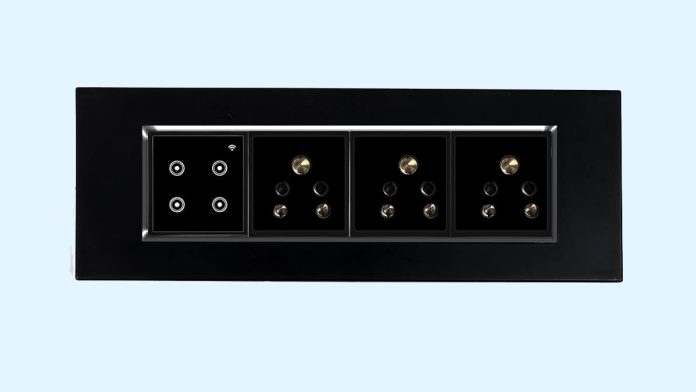The integration of modular touch controllers has redefined instrument expressivity and interactivity. This article explores the Electronics and Technology Behind Modular Touch Controller with an emphasis on its critical components and their roles in advancing performance. By closely examining each technological facet, we illuminate how smart instruments harness cutting-edge functionality, ensuring superior user experience and artistic potential in live performances and studio environments.
| Table of Contents | |
|---|---|
| I. | Capacitive Touch Sensing & Electrode Design |
| II. | Multitouch Capability and Pressure Sensitivity |
| III. | Analog Front-End (AFE) Circuitry |
| IV. | High-Speed ADCs and Signal Digitization |
| V. | Advanced Microcontroller and DSP Integration |
| VI. | Modular Architecture and Scalability |
| VII. | Communication Protocols and Interfaces |
| VIII. | Real-Time Firmware and Software Algorithms |
| IX. | Power Management and Efficiency |
| X. | Haptic Feedback and Actuator Integration |
| XI. | Environmental Noise Immunity and EMI/EMC Shielding |
Capacitive Touch Sensing & Electrode Design
Capacitive touch sensing forms the core of the modular touch controller by detecting human touch through subtle electrical changes. Thoughtfully designed electrodes optimize sensitivity and coverage, ensuring precise input detection for expressive performance. This approach directly influences timbre modulation and parameter control in smart musical instruments, enabling a seamless, intuitive interface essential for live play and electronic music composition.
Multitouch Capability and Pressure Sensitivity
The multitouch feature allows simultaneous detection of multiple touch points, facilitating complex gestures and layered controls. Integrated pressure sensitivity further refines musical expression by interpreting variations in force, which can dynamically influence sound modulation. This dual capability ensures that a modular touch controller responds naturally, mirroring the nuanced performance techniques found in traditional instruments.
Analog Front-End (AFE) Circuitry
The analog front-end circuitry is pivotal in transforming raw touch signals into usable electronic data. By conditioning and amplifying sensor outputs, it prepares the information for digital processing. In this module, the Electronics Behind Modular Touch Controller is meticulously engineered to maintain signal integrity while suppressing unwanted noise, ensuring high fidelity in musical expression across diverse performance conditions.
High-Speed ADCs and Signal Digitization
High-speed analog-to-digital converters (ADCs) rapidly capture and digitize sensor data to enable real-time signal processing. This precision in conversion underpins the Technology Behind Modular Touch Controller by translating intricate touch gestures into digital signals that drive sound synthesis and modulation, vital for responsive and expressive musical interactions in a digital instrument environment.
Advanced Microcontroller and DSP Integration
A robust microcontroller paired with digital signal processing (DSP) algorithms orchestrates the interpretation and manipulation of sensor inputs. This integration enables advanced features like gesture recognition and dynamic filtering, providing smart musical instruments with the versatility to adapt to different performance styles and environmental conditions, thus enhancing overall playability and expression.
Modular Architecture and Scalability
Designed with a modular architecture, the touch controller supports easy expansion and customization. This scalability allows musicians to configure their instrument setups by adding or upgrading specific modules tailored to their performance needs. Such flexibility epitomizes the Electronics Behind Modular Touch Controller, where hardware and software elements work in harmony to deliver a personalized and progressive musical experience.
Communication Protocols and Interfaces
Robust communication protocols and interfaces ensure seamless data exchange between the touch controller and other system components. Standardized connections, such as MIDI over USB or wireless technologies, enable integration with various instruments, controllers, and digital audio workstations, supporting a cohesive ecosystem that enhances musical creativity in both studio and live performance settings.
Real-Time Firmware and Software Algorithms
Optimized real-time firmware and software algorithms manage sensor data processing and response generation with minimal latency. By employing sophisticated error correction and adaptive filtering techniques, this layer guarantees that each touch gesture is accurately interpreted, epitomizing the Technology Behind Modular Touch Controller to empower musicians with precise control and expressive performance dynamics.
Power Management and Efficiency
Efficient power management techniques are crucial for delivering reliable performance while minimizing energy consumption. Innovative design strategies, including low-power modes and dynamic voltage scaling, ensure that the modular touch controller remains operational in diverse conditions. This approach extends the battery life of portable smart instruments, enabling uninterrupted performances and sustained creative exploration.
Haptic Feedback and Actuator Integration
Haptic feedback provides tactile responses that mimic the sensation of traditional instrument interaction. Integrating compact actuators within the modular touch controller delivers physical cues and enhanced realism, allowing musicians to feel the music they create. This feature not only improves user engagement but also facilitates a more intuitive and immersive playing experience during live and studio applications.
Environmental Noise Immunity and EMI/EMC
Shielding Shielding techniques and sophisticated filtering methods ensure that the modular touch controller performs reliably amidst electromagnetic interference and environmental noise. EMI/EMC shielding preserves signal clarity even under challenging conditions, safeguarding the integrity of sensor data. This environmental robustness is critical in live performance settings and studio environments, where external disturbances can compromise performance quality.

